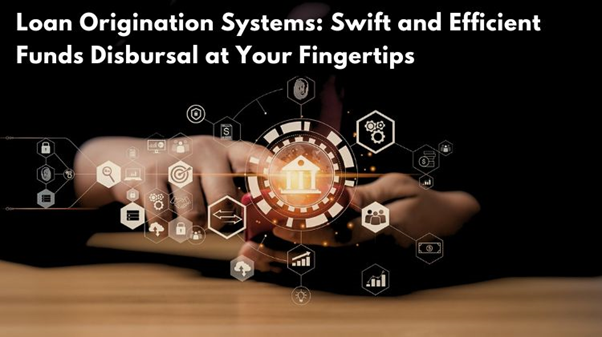Artificial intelligence is quickly changing how lending systems work. What started as a push to make loan processing faster has now turned into something much bigger. The rise of generative AI has improved many well-known digital finance tools, including those used for loan origination. Today’s loan origination systems (LOS) such as BankPoint are expected to offer a new level of personalization, speed, and smart features throughout the entire lending process.
Having a cloud-based LOS is no longer something new—it has become standard. This shift has brought important changes to the market, especially for software that is meant to be reliable, safe, and competitive. Every business owner now looks for a loan origination software that meets their goals, cuts costs, and helps improve performance across the board. That’s why we’re sharing a full view of the LOS options available in 2025, along with key trends and practical benefits of each.
This guide offers a clear comparison of top loan origination systems so you can make informed choices and find the best value for your needs.
Key Things to Look for in Loan Origination Software
Choosing the right loan origination system takes time and care. Picking the wrong one can slow down your business and stop your automation efforts from working well. Here are some things to think about:
- Functionality: The software should support every step in the loan process. It should also lower the chance of errors, fix slow spots in the process, and help speed up underwriting.
- Scalability: A strong LOS should grow with your business without running into major delays or needing downtime.
- User Experience: The best systems have easy-to-use and interactive features for both customers and administrators.
- Cost: Home Loan Calculator should have a balance between upfront cost and ongoing fees so you can manage your budget.
- Support: Your software provider should offer 24/7 help to fix tech issues, assist staff and clients, and provide updates when needed.
A loan origination system with these features will likely bring the results you expect—better performance, strong compliance, and a smooth customer experience—all backed by AI tools that reduce mistakes.
Top 10 Loan Origination Software Choices in 2025
- ABLE Platform™
ABLE offers advanced and flexible software that helps lending businesses stay competitive. It speeds up loan processing (down to 15 minutes) and uses AI to assess credit risk. Users like its multichannel onboarding and easy-to-use, low-code tools. It also comes with built-in tools to meet lending rules.
Key Features: Fast loan processing, multichannel onboarding, AI-powered decision engine, custom loan setup, compliance tools, document automation, real-time data tracking, clear dashboards.
Pros:
Fast to set up
Fully automated servicing
Easy to expand
Low-code customization
Budget-friendly
Cons:
Complex calculations
Takes time to learn
- HES FinTech
HES offers a full-service solution that automates the loan process from start to finish. Its LoanBox product includes strong security, custom workflows, and real-time data tracking.
Key Features: Full automation, secure systems, adjustable workflows, live data analysis.
Pros:
Speeds up processing
Reduces costs
Boosts security
Cons:
Higher starting costs for small firms
- Encompass (ICE Mortgage Technology)
Encompass, by ICE Mortgage Technology, focuses on adding generative AI to its digital mortgage tools. It supports every stage of the mortgage process with good compliance and customer service.
Key Features: Strong automation, many service channels, advanced tracking, digital documents, access to secondary markets.
Pros:
Big improvements in efficiency
Supports growth with many APIs
Built-in compliance tools
Cons:
High setup cost
Complex to use
Outdated software tools with pricey updates
- Factoring Software (ProfitStars by Jack Henry)
This system focuses on invoice factoring and is ideal for companies that lend against accounts receivable. FactorSoft automates billing, funding, and portfolio management using AI.
Key Features: AI invoice processing, portfolio tracking, client updates, regular reports.
Pros:
Smooth automation
Fits into Jack Henry and other systems
Cons:
Expensive to start and run
Limited to factoring use
- Finlux by M2P
Finlux is a cloud-based system used by many banks and FinTech firms. It supports API-based automation and can be customized to different business needs.
Key Features: Full automation, mobile app, workflow editing, AI loan decisions, analytics, reports.
Pros:
Custom workflows
Easy to grow with your business
Covers the whole loan process
Meets rules in 15+ regions
Cons:
Setup cost is high
Needs API integration
- E-Wallet Software (SDK.Finance)
SDK.Finance offers software that combines e-wallets and loan tools. It’s ideal for businesses entering financial services, and it’s built with AI and cloud systems.
Key Features: Combined wallet and loan tools, AI decisions, mobile-first setup, scalable APIs, built-in compliance.
Pros:
Quick to set up
Uses AI for smart features
Connects to payment tools
Saves on operations
Cons:
Not highly customizable
Depends on APIs
Limited user history
- Mortgage Automator
This is for private lenders handling residential, commercial, or construction loans. It automates tasks, creates documents, and handles payments and reports.
Key Features: Auto document setup, loan handling, built-in CRM, investor tools, borrower/investor portals, flexible APIs.
Pros:
Saves time
Custom workflows
Strong support
Works with many tools
Cons:
Pricey subscription
No QuickBooks link
Some features take time to roll out
- Floify
Floify is a cloud tool built for mortgage brokers and banks. It handles document collection and decisions using AI and has a mobile-friendly design.
Key Features: Online loan forms, e-signatures, real-time status updates, custom workflows, mobile access, compliance, reports.
Pros:
Easy to scale
Clear pricing
Fast loan processing
Cons:
Limited custom options
Too many emails
- Newgen Loan Origination
Newgen, based in India, provides AI-powered LOS for banks and FinTechs. It focuses on speed, rules compliance, and customer service.
Key Features: Full process automation, easy-to-use portals, real-time reports, AI tools, document management.
Pros:
Fast to set up
AI speeds up service
Works with 100+ tools
Complies with laws in 50+ areas
Cons:
Hard to use AI tools at first
Expensive to set up
Fewer custom options
- ARIVE
ARIVE serves brokers and small lenders. It combines LOS, PoS, and a pricing engine in one tool, with access to a marketplace and automation powered by generative AI.
Key Features: Full finance system, borrower portal, live pricing, contract processor support, compliance tools.
Pros:
All-in-one tool
Lender marketplace
Fast, automated processing
Updated by user feedback
Cons:
Takes effort to set up
Scaling is costly
Not many reviews
Moving Forward with Smart Lending Tools
All of these systems show how fast digital lending is moving forward. What used to seem like advanced technology is now part of everyday operations. In 2025, generative AI is playing a big role in shaping this field. That’s why choosing a reliable, full-featured, and rule-following LOS is so important to help your business stay ahead.
FAQ
How does Generative AI help beyond automation?
AI reduces errors, improves risk checks, gives better predictions, and helps with reporting and rules.
What structures help companies use Generative AI in a fair and safe way?
Clear rules, data tracking, and smart system designs help avoid bias and meet AI-related laws.
What else should companies look at when choosing a system for long-term use?
Besides features, they should check how well the system fits long-term goals, ROI, and how easily it can grow.
What future uses of AI should companies explore now?
Firms should study AI uses in areas like fraud detection, new risk models, and custom financial planning.
What security measures should be in place for AI and loan data?
Strong cybersecurity, clear data handling policies, and trusted encryption tools are needed to protect client data and keep trust.










Comments